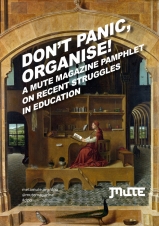Gurgaon Workers News - Newsletter 12 (August 2008)
Gurgaon in Haryana is presented as the shining India, a symbol of capitalist success promising a better life for everyone behind the gateway of development. At a first glance the office towers and shopping malls reflect this chimera and even the facades of the garment factories look like three star hotels. Behind the facade, behind the factory walls and in the side streets of the industrial areas thousands of workers keep the rat-race going, producing cars and scooters for the middle-classes which end up in the traffic jam on the new highway between Delhi and Gurgaon.
Thousands of young middle class people lose time, energy and academic aspirations on night-shifts in call centres,selling loan schemes to working-class people in the US or pre-paid electricity schemes to the poor in the UK. Next door, thousands of rural-migrant workers uprooted by the agrarian crisis stitch and sew for export,# competing with their angry brothers and sisters in Bangladesh or Vietnam. And the rat-race will not stop; on the outskirts of Gurgaon, Asia's biggest Special Economic Zone is in the making. The following newsletter documents some of the developments in and around this miserable boom region. If you want to know more about working and struggling in Gurgaon, if you want more info about or even contribute to this project, please do so via:
www.gurgaonworkersnews.wordpress.comgurgaon_worker...
Gurgaon Workers News - Newsletter 12 (August 2008)(full version: www.gurgaonworkersnews.wordpress.com)
In the August issue you can find:
1) Proletarian Experiences -Daily life stories and reports from a workers' perspective
*** Thread cutters, ironing workers, taylors, machine operators,assembly line workers for medical equipment or automobile parts, CocaCola workers, security guards... -Continuation of short reports from workers employed at differentcompanies in Gurgaon (for more see: Gurgaon Workers News no.10 andno.11). The reports have been gathered between March and June 2008.Particularly the textile workers are exploited by international chains:Wal Mart, Tom Taylor, H&M, Marks & Spencers, Mexx, Karstadt, Quelle,Neckermann and so on. Most of the reports do not show much more than thefact that the official legal working standards are not met. The variouswildcat strikes at the end of 2007 (see: GWN no.10) show that onlyunruly proletarian behaviour can improve the situation. Given thecurrent inflation of 12 percent and the even higher inflation of pricesfor “proletarian goods” - gas, grain, rice, transport - the “unrulybehaviour” will become a necessary act of survival.
*** Book on working-conditions of women workers in Gurgaon and Noida -The bulk of this book consists of four sectoral studies of women workersin Delhi and its satellite townships of Noida and Gurgaon, through acombination of structured questionnaires and individual and groupdiscussions conducted in 2002-04.(Women Workers and Globalisation: Emergent Contradictions in India, byIndrani Mazumdar; Stree, Kolkata, for Centre for Women's DevelopmentStudies, Delhi, 2007)
2) Collective Action -Reports on proletarian struggles in the area
*** Unfinished Unrest -Three short stories of young workers on strike, Gurgaon-Faridabadindustrial belt in spring 2008. They are employed at Gulati Exportsfactory, a major textile exporting company. They work for ActionConstruction Equipment (ACE), a tractor manufacturer in nearbyFaridabad. They laid down tools at Ilpea Paramounts, a manufacturer ofplastic and rubber parts for the automobile industry. The storiesportray the arbitrary role of the labour department, the main stateinstitution which intervenes in case of industrial conflicts. Theyportray the repressive function of the police and other paid goons. Theyshow the problem of workers in struggle being replaced by workers insearch of a living.
3) According to Plan -General information on the development of the region or on certaincompany policies
*** 1,500 cops deployed in Gurgaon to secure the building of parts ofthe SEZ boundary wall -Summary of recent newspaper articles on India's biggest SEZ in themaking. In July 2008 the state ordered hundreds of riot cops to securethe first building procedures for the SEZ. Local villagers, most of themlanded peasants, demand higher compensation for their land. Later duringthe week a huge police action which tried to prevent a conservativeanti-SEZ group from blocking the highway caused hours of trafficstand-still, effecting the local (call centre) industries.
*** The City makes the Countryside -On the background of the land-grab for the SEZ we summarise somearticles on the changing class structure in the rural areas surroundingGurgaon, Haryana.
The first article portrays the situation in a village near Gurgaon,affected by the land-grab for the SEZ. The author describes how the“traditional village social cohesion” is dissolved in the process.The second article isn't much more than a hint: the capitalist farmersin Punjab and Haryana have trouble finding migrant workers for bringingin their harvest. They cry about rising wage demands of theproletarians. They blame urban areas like Gurgaon for draining theirhuman capital, and they accuse the state-organised work-scheme NREGA ofcreating an upward wage pressure. In Gujarat the state government hasincreased the minimum wage for rural labourers by 100 per cent in July2008. The massive increase of wage labour in recent years plus the hikesof food prices ask for preventive counter-insurgency.The third article examines the accused work-scheme: given the enormoustransformation and turmoil on the countryside, the huge streams ofmigration, the thousands of debt-suicides, the growing armies of Maoism,the state has to launch a large-scale welfare scheme to try to securesocial control. The scheme helps control rural proletarian reproductionby giving only one person per household a paid job, controlling theirmovements by implementing a system of registered enrolling andformalised applications, mobilising a cheap manual work-force forinfrastructure programs, re-enforcing the power of the local villagecouncil by entrusting it with the management and payment function of thework-scheme.The last article has a sad background: in December 2007, in a Gurgaonupper-middle class school a teenager was shot by school mates. TheIndian media was full of “Americanization” paranoia. In contrast to thissuperficial reaction some journalists tried to understand how theviolent act was a mirror of the violent transformation of mediumpeasants into rent-based new rural rich – and how in Gurgaon they tendto clash with their urban upper-middle class counterparts.
4) About the Project -Updates on Gurgaon Workers News
*** German BookletSupplement of the latest issue of Wildcat - 80 pages summary onproletarian life and struggles in Gurgaon– available by end of August2008. For orders see: www.wildcat-www.de
*** Glossary -Updated version of the Glossary: things that you always wanted to know,but could never be bothered to google. Now even in alphabetical order.
Mute Books Orders
For Mute Books distribution contact Anagram Books
contact@anagrambooks.com
For online purchases visit anagrambooks.com






